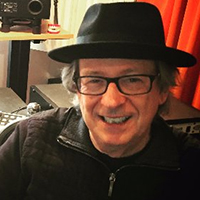During a session, I remember when an artist was on mic, out in the studio ready to start vocal overdubs, and the producer asked: “How do we look in here, from out there?”
Interesting, because he knew the appearance of the control room to the artist might affect the vocal performance. The control room (from the studio) does look like an aquarium with the huge window and the silent action of the animals encased within it.
Reactions to performances reflected in facial expressions and body language are everything to singers and musicians isolated out in the studio. The concern is that the working in the studio does not feel like being in a Petri dish under the microscopic scrutiny of the control room.
A great vocal sound starts with a good singer who has the artistic goal to perform the best vocal possible. Control room personnel—producer, engineer, assistants, gofers, etc., all have a professional responsibility to work towards the pursuit of the artist’s goals.
For the first hour of a new vocal session, everyone in the control room is on a kind of “audition” until the artist feels comfortable and performs well. It is the producer’s job to create the studio setting—the whole “vibe” to help get a good vocal performance from the artist and to make everyone else produce their best work.
During a vocal session, the producer is the arbiter of the feeling and quality of the vocal performance. The producer is the artist’s confidant, coach, good friend, creative partner, mentor, and most importantly the de facto proto audience – the first public ears on the artist and their music.
Because a well-prepared singer might give immediately the best and freshest performance in the beginning of the day, even during the microphone audition process, the engineer should be prepared and ready to record and capture a great vocal sound. The producer may require those mic audition recordings later and will be thankful for their useable fidelity.
The engineer’s vocal signal chain should be powered up, working and adjusted somewhere in the “ballpark,” the song booted up in the DAW with a new vocal track(s) ready to record, and a suitable monitor mix made and a usable cue mix done and checked in the singer’s headphones.
How Pro Can You Go?
Getting to know your favorite signal chain intimately is very useful for getting good vocal sounds quickly—especially in the case of the aforementioned first takes/microphone audition.
You need to know what different combinations of mic pre-amps, EQs and compressors produce in terms of vocal sound possibilities. Experiment often if time and your clientele’s interest permits.
I find the overarching difference between true pro gear and lower-end products is that professional gear is much more forgiving in it’s operational requirements than cheaper gear.
And that is not to say you cannot record usable sound using a $300 mic pre-amp versus a multi-thousand dollar boutique piece. You’ll have to work a lot harder to get a good sound with the low dollar gear and you can make just as crappy of a recording with either it or with the high-end boxes!
For example, pro gear usually has much more headroom, a lower noise floor and higher dynamic range. You’re less likely to overload the front end of pro mic pre-amps with a signal from a hot mic and a loud singer.




















